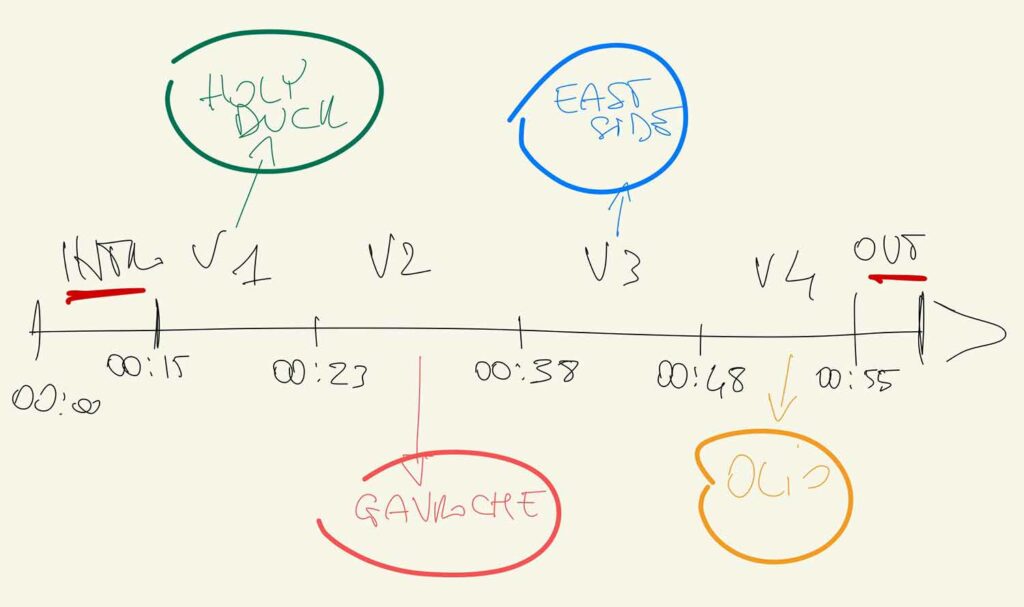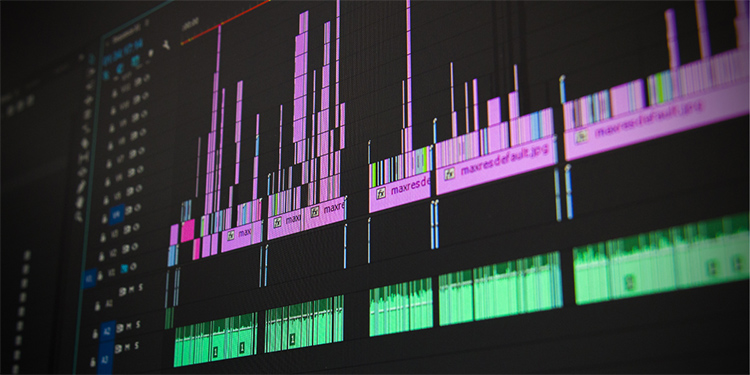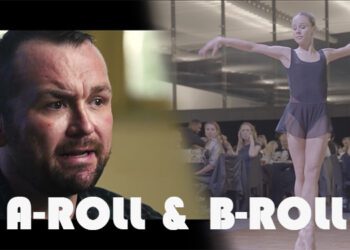Video editing is the art of assembling raw material to create a finished video that fulfils a vision, evokes emotions, and engages audiences in various ways, such as making them think, laugh, feel happy, sad, tense, interested, curious, you name it!
In video production, especially in small projects without a director, the video editor is responsible for the creative elements that contribute to a high-quality video. Since creativity is subjective and personal, each editor brings their unique perspective on what makes a video great.
Ultimately, the video itself is the ultimate judge of its success. Does it work? Does it connect with audiences on a personal level? Does it keep viewers engaged? Does it get shared or viewed? Similar to movies, the audience’s stamp of approval is the final verdict on the success of a video.
When does an editor have total creative freedom?
There are certain projects where the role of the editor is crucial, such as event videos, which often lack storyboards or pre-planning for editing. In these cases, the editor has to make sense of the abundance of footage and craft a cohesive video.
In other projects with a more structured approach, where a storyboard is already in place, the editor’s role is still significant, but certain creative decisions like tone, structure, and music may have already been made. The editor’s task is to adhere to these decisions.
In this article, we assume that the editor is responsible for all aspects of video post-production without pre-planning or storyboarding, which is common in small-scale productions like corporate videos, event videos, wedding videos, marketing videos, etc.
Here are the key considerations for video editing in such scenarios.
1. Genre
It is crucial for the editor to understand the genre and speak the creative language of the video they are editing. Different genres require specific cuts, music tracks, and camera moves to effectively convey the intended tone. Even in local small video productions, it is important to get the genre and tone right to ensure a video’s success.
The choice of music is particularly significant in defining the genre of the video, and the editor’s selection of music can greatly impact the overall tone. Music sets the pace for the video, influencing decisions on the cuts, the mood, and the emotional impact. The way footage is cut to the music, transitions, hits, and syncing all contribute to the video’s tone and genre, ultimately influencing the final result.
As an evaluator of video editing work, the first question to ask is whether the editor accurately captured the genre and tone of the video. Getting these elements right is crucial to ensure the video resonates with the intended audience and achieves its desired impact.
Here’s an example of a video edit where the pacing of the cuts is largely determined by the genre. As a question-and-answer type of video, this edit required frequent jump cuts and transitions between speakers and takes, while maintaining a lively and engaging tone to keep the viewer interested.
2. Structure
The next crucial step in video editing is to establish a coherent structure that makes sense to the audience. Without a well-thought-out structure, an editor’s ability to captivate and engage the audience diminishes significantly.
An initial structure, though flexible and subject to change, serves as the foundation for the video. It allows the editor to make informed “big picture” decisions from the outset, including:
- Determining the appropriate length of the video
- Arranging the order of content for optimal flow
- Creating tension and release moments to enhance storytelling
- Identifying key communication points to convey the intended message
- Incorporating a compelling call to action for the audience
- Selecting appropriate visuals and graphics to support the story
Establishing a solid structure from the beginning enables the editor to effectively shape the video and ensure its cohesiveness, engagement, and impact on the audience.

3. B-roll and visuals
A skilled editor will meticulously review ALL the b-roll footage captured during a session, regardless of how much there is. This is especially crucial during live events, where a vast amount of footage may be captured, and even a small portion of a clip could be valuable. By reviewing all of the footage, the editor can identify the best pieces of b-roll to complement each moment in the video.
Therefore, when evaluating a video edit, I always ask myself whether the b-roll is relevant and whether the editor has put in the necessary effort into this crucial part of post-production.
4. Audio
When assessing the quality of a video, it’s essential to evaluate the audio portion as well. Unfortunately, many editors lack expertise in this area. Here are some questions to ask yourself when evaluating the audio quality:
- Is the overall volume of the video too low or on-par with other videos? Or do you need to raise the volume on your device to make up for the difference in volume?
- Are the voices clear and easily understandable?
Is the music mixed properly, and does it lower in volume when someone is speaking? - Have any other elements been included besides music and recorded voices? Has the editor made an effort to incorporate sound effects that emphasise certain elements of the video?
5. Colour
In small video productions, the editor often takes on the role of the colorist and is responsible for correcting the colour of each clip in the video to make every second look its best.
This process can be time-consuming but is crucial to the final result, as good colour grading sets the difference between an amateur and professional-looking video. It’s also important to keep in mind that many viewers these days initially watch videos without sound, so the visual impact of the video is especially significant.
When evaluating colour correction and grading, there are two essential questions to ask:
- Is the colour grading appropriate for the genre of the video?
- Are the colours vibrant and well-balanced?
- Is the video consistent in its colour throughout all the shots?
Final thoughts
In the end, video editing is an art form, and as with any art form, it is highly dependent on the viewer’s individual taste and judgement. What one person might love, another might hate, and that’s perfectly fine. It’s natural to have different opinions about something that is subjective.
So, how can you choose a good video editor? The answer is simple: review their portfolio and examine their previous work to determine if it aligns with your vision and needs.
The above checklist provides a technical guide for beginners who are struggling to identify why a video isn’t working for them. Often, it’s a gut feeling that’s hard to articulate. By breaking down the various elements of post-production and analysing each component, you can identify the root of the issue and turn your emotions into actionable feedback.













